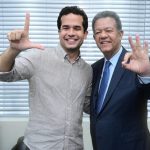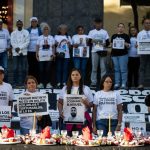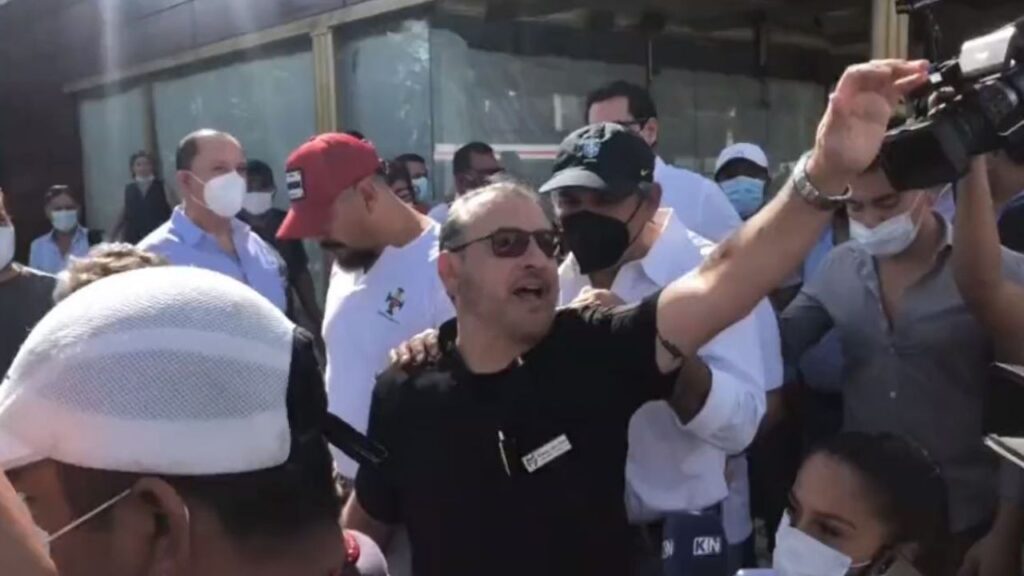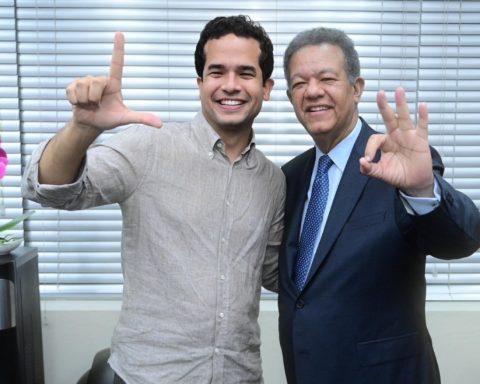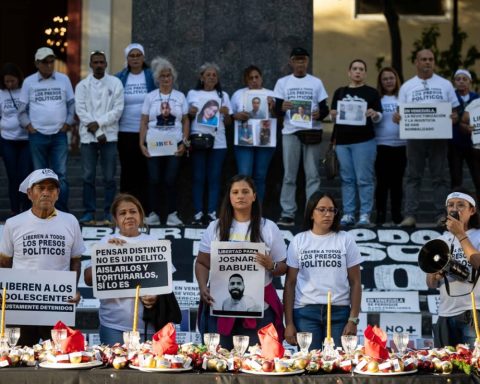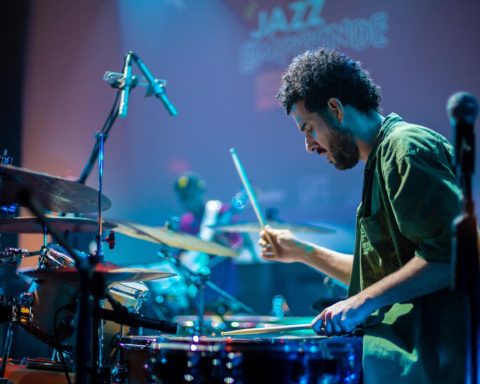Indigenous communities inaugurated FM radio transmission studios in the last month, while others advance in the acquisition of equipment and in the construction of new stations through self-management and access to state financing programs, such as the Competitive Development Fund for Audiovisual Communication Media (Fomeca), which is administered by the National Communications Entity (Enacom).
One of the communities that began its experience as a broadcaster It is the calchaquí diaguita Potrero Rodeo Grande, made up of about 110 families living in the Choromoro Valley of the Department of Trancas, about 100 kilometers from the city of San Miguel de Tucumán, which inaugurated FM Identidad 88.7Mhz last December and since then it transmits informative, cultural and identity programs of historical rescue, among others.
“We began to organize ourselves to get the equipment and build the transmission studio. We built the studio with adobe and cement walls, and an insulated sheet metal roof with a machimbre ceiling”Daniel Sanchez
Community life takes place between “the agricultural production of various fruits and vegetables for family consumption, the elaboration of handicrafts and other field work, such as raising goats, sheep and horses, essential for crossing the hills”, told Télam Daniel Sánchez, the chief of the community.
And he added: “In 2014 a friend threw me the proposal to put up a radio. Until that moment, I had no knowledge of anything regarding communication but I took the idea, I took it to the (community) assembly, where we debated it and We were excited that at some point it could happen. Although I saw it very far away, I began to internalize the issue with indigenous communicators.”
Enacom: “We try to accompany the indigenous communities and guarantee their right to communicate”
María Sucarrat, deputy director of Community Media and Plurality of Voices of the National Communications Entity (Enacom), told Télam that the native communities have benefited through participation in Fomeca’s “Line D”, exclusively for indigenous peoples, as well as in other lines of financing, which allowed them to access training in radio, the acquisition of equipment and the arrangement and adaptation of their transmission studios.
“Many communities learned about the Fomeca tool when the trainers traveled to carry out training. We understand that the presence of the State in the territory is essential to guarantee access to this and other rights,” said Sucarrat.
And he explained that “the training carried out regionally seeks the continuous accompaniment of the indigenous communities summoned” to them. In this sense, he maintained that Enacom’s follow-up is “melee” and aims to “resolve the difficulties and particular issues of each communication project.”
For Sucarrat, “the communities value the holding of workshops” because, in addition to technical and communication issues, they foster “meeting and dialogue between indigenous communities.”
The person in charge of Community Media and Plurality of Voices recalled that, “as a result of the creation of an exclusive line for indigenous peoples, a permanent work table was formed in 2017 articulated by three organizations: Enacom, the Public Defender’s Office of Public Audiovisual Communication and the National Institute of Indigenous Affairs” (INAI).
The INAI is responsible for providing financing to the indigenous media, as established by article 152, subsection F of the Audiovisual Communication Services Law No. 26,522.
The Enacom was created at the beginning of the macrista government to replace the Federal Authority for Audiovisual Communication Services (Afcsa) and aims to lead the process of technological convergence and guarantee the population’s access to internet services, fixed and mobile telephony, radio, postcards and television.
Meanwhile, the Audiovisual Communication Services Public Defender’s Office was created by the Media Law and its objective is to promote the rights of electronic media audiences.
According to data provided to this agency by Enacom, in the 2020 period, 34 indigenous communities benefited from a total of 56 projects that participated in various Fomeca lines. The beneficiary communities represent 23 percent of the total, while the winning projects were 21 percent.
Big Rodeo Paddock it was authorized to operate that same year by the body that preceded Enacom, the then Federal Audiovisual Communication Services Authority (Afsca).
After the official approval, “we began to organize ourselves to get the equipment and build the transmission studio. We built the studio with adobe and cement walls, and an insulated sheet metal roof with a machimbre ceiling,” Sánchez said, while He explained that the transmission plant is located “in a building where the administrative offices of the community work” from where they reach about 30 kilometers around.

The community won two Fomeca contests, the first was for the purchase of equipment and the second to finish building the studio, from where they broadcast news, cultural and musical programs every day. “The idea is that the audience can access a complete grid, with the satisfaction that it is our voice, the voice of the community and that of our people (diaguita), and we also open the space to the participation of other communities,” Sanchez emphasized.
For the moment, They broadcast from Monday to Friday from 9 a.m. to 10:30 p.m. “We started with ‘Informal mornings’, in which we provide information from all areas, both local, provincial and national, and we also pass out communications sent to us by the people of our community and other nearby communities. At noon we continue with the folklore and from 2:00 p.m. we play all kinds of music and several blocks of tropical music, which our people like very much,” explained the Diaguita authority.
“We are preparing a special for Saturdays and Sundays with cultural and identity issues of historical rescue, as well as indigenous rights and issues that are emerging in the community”, he pointed.
“We were able to buy the antenna and the rest of the equipment thanks to a project financed by (the Ministry of) Social Development, although it was only in 2015 that we were able to undertake the construction of the walls of the radio station, above the community’s own premises”oscar talero
Sánchez said that “the work on the radio, at the moment, is ad honorem and for now there are two people who perform the function of operators and producers and support the airing; the idea is that they themselves are trainers of those who want to come. , so we are adding more people”.
For its part, in Rosario, the qadhuoqte community of the Qom People has been broadcasting since 2018 through FM Qadhuoqte 94.5 Mhz. Its members reside in the Los Pumitas neighborhood, northwest of the city of Santa Fe, where dozens of families from the Gran Chaco and surrounding areas arrived in the ’80s.
During the isolation due to the pandemic, school education programs were broadcast for students who did not have access to the internet, within the framework of the We Continue Educating program, which was implemented by the national State.
Oscar Talero (54 years old), a historical reference in the community, told Télam: “Around 2007 we began to echo the struggles that our brothers had been carrying out for a new Media Law. At that time we thought why we could not have a voice of our own and that is how we began the process of building the radio.”

“In 2008 we put together a project with colleagues who are not from the community, but seeing the desire we had to communicate, they joined us to give us a hand and in 2009 we got a local license, but we had no equipment, not even a ranch since where to broadcast, so we left it there,” he recalled.
“In 2009 we saw that there were many brothers working on the issue of communication with identity and, as we had all the papers in order, we said ‘let’s move forward’. Thus we began to build the idea with the participation of many brothers who were in the process. of the formation of the radio and today they died. Many elderly people came with a broad idea and very concrete action since they dreamed of having a radio”, said the Qom referent about his incorporation into the process of the fight for the Law of Audiovisual Communication Services , approved that same year by the National Congress.
“We were able to buy the antenna and the rest of the equipment thanks to a project financed by (the Ministry of) Social Development, although it was only in 2015 that we were able to build the walls of the radio station, above the community’s own premises,” he recalled. .
“The radio is a service and a right for our people; during the pandemic it was carried out with school education issues so that those who do not have internet at home can listen to it on the radio and take classes”oscar talero
“In 2018 we managed to build another part of the construction with the participation of architects from the Faculty of Architecture of the National University of Rosario and also with brothers and fellow electricians and masons, and a large part of the community who participated in the construction. of the study,” he explained.
In turn, that same year “we were able to install the equipment that we had already had for about five or six years and we began to work on training our young people, both in technical operation and in speech, and in charge of the radio we put brother Bernardo Saravia, who is also from native peoples,” he said.
In 2019 they managed to have connectivity “through an agreement with an internet company to expand the antenna, so we took out the little antenna we had and put a 30-meter one, and from there we broadcast online” (https://fmqadhuoqte.radiostream123.com/).

“The radio is a service and a right for our people; during the pandemic it was carried out with school education issues so that those who do not have internet at home can listen to it on the radio and take classes,” he stressed.
“Programming is extensive, intercultural, both in Spanish and in Qomlaqtaq (Qom language), which is spoken by many of our people, and we make cultural, informative, general interest, musical programs and everything that our brothers and sisters are willing to develop. sisters,” he specified.
“Our idea is that we have to have our own connection with our indigenous peoples and we have to provide our own territorial information. This is how we build a radio that strengthens communication with identity,” he concluded.








